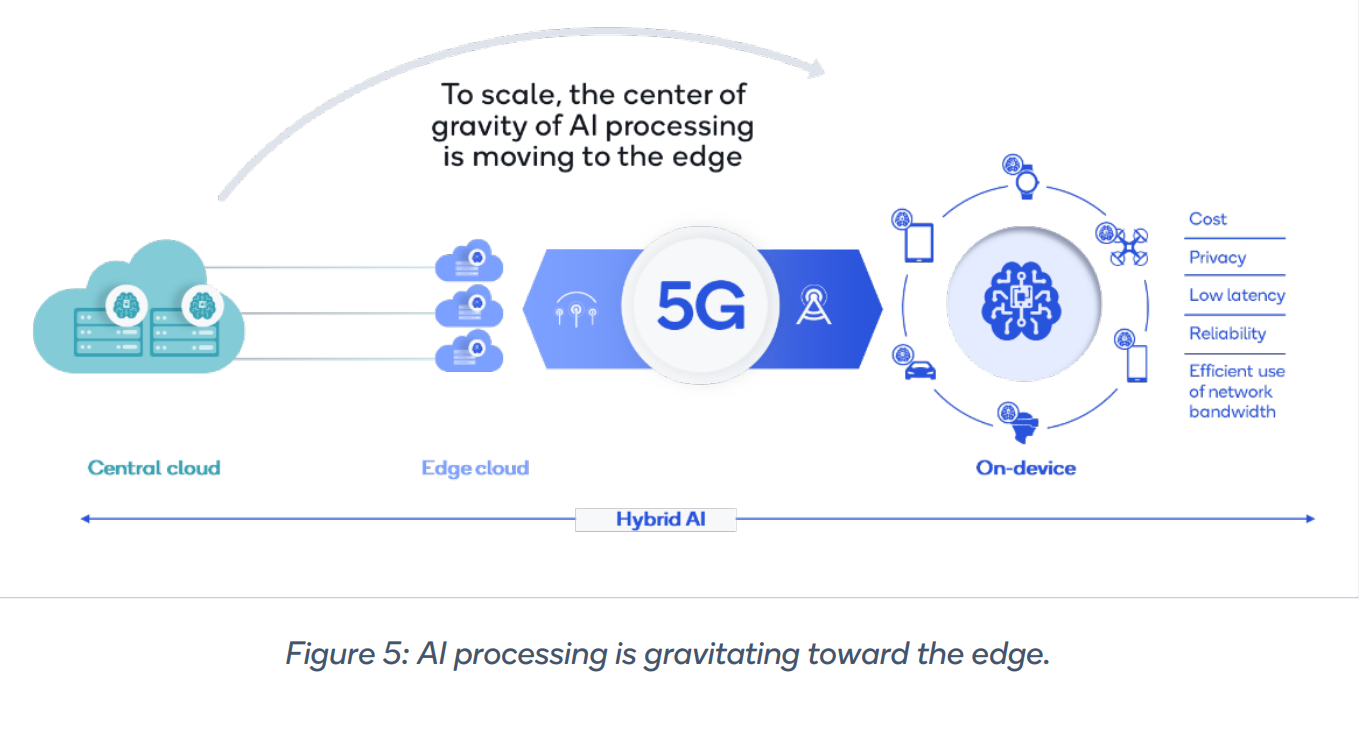Talk about artificial intelligence (AI) these days implicitly assumes one thing: that AI runs on the cloud. For many companies, AI is just an extension of their cloud computing offerings. It’s even priced in a similar way. We hear much less about the hybrid — digital and physical — components that feed into AI technologies. The future of hybrid AI has become a focus for Qualcomm.

In recent months, the chip giant has doubled down on building what it calls hybrid AI, which balances cloud-based AI models with models that run directly on a device. Its vision expands beyond mobile phones and includes sensors, robotics, vehicles, machines, and more. The company compares its trajectory with that of traditional computing, which went from mainframes and thin clients to a combination of cloud computing and smart edge devices, like mobile phones and PCs. Qualcomm believes this transition away from complete reliance on the cloud is necessary for AI implementation to continue accelerating.

Which companies are the most important vendors in AI and hyperautomation? Check out the Acceleration Economy AI/Hyperautomation Top 10 Shortlist.
Why is Edge AI Beneficial?
Edge AI involves running models on an edge device rather than on a centralized server. These models must be relatively lightweight and the devices must have the necessary compute power. The benefits of edge AI include:
- No latency: Communicating with the cloud takes time. In many use cases, like self-driving cars or sensors in high-speed factories, this latency could cause critical failures.
- Cost: A consumer of AI products like ChatGPT doesn’t really consider the cost of using AI. But an enterprise-scale integration, which may run thousands or millions of models a day, will quickly see accumulating costs if they run in the cloud (versus on-device). Edge AI also saves on data-transmission costs.
- Privacy and security: You don’t want critical information passed along data pipelines with many players, if you can avoid it.
- Reliability: Running AI on-device eliminates the need for constant uptime on the server side and also reduces overall risk.
- Personalization: Many edge devices greatly benefit from running AI directly. Examples include a smartphone using computer vision on-device to recognize your face, a smartwatch using machine learning to personalize your device, or smartphones using AI to enhance your pictures.
There are tons of uses for edge AI currently and in the near future. These include AI features embedded into:
- other software-as-a-service (SaaS) products running offline (like an offline ChatGPT)
- autonomous driving
- generative AI applications for extended reality (XR) headsets
- robotics
- drones
- factory sensor IoT networks
- smart homes
- weather forecasting using remote IoT networks
- hospitals
- autonomous vehicles

with On-Device and Hybrid AI” by Qualcomm
Optimizing On-Device AI
Qualcomm is first-and-foremost a hardware company that does R&D really well, and it’s leaning into this role when it comes to AI. In its own words, the company is “the R&D engine behind it all… We are inventing, developing, and commercializing power-efficient on-device AI, edge cloud AI, and 5G to make [hybrid AI] a reality.”
Besides powering most of the research required in these engineering fields, the company has set its sights on “full-stack on-device AI optimization.” It is simultaneously building hardware and software designed to fit together, which reduces a device’s energy consumption and increases performance. It’s building AI applications designed for its Snapdragon chipsets. It also offers the Qualcomm AI Stack, which developers can use to create, optimize, and deploy AI on Qualcomm hardware.
One of Qualcomm’s recent achievements includes running Stable Diffusion, the generative AI model used for generating images, directly on an Android in under 15 seconds. This is an impressive milestone in building its vision for hybrid AI.
Final Thoughts
Qualcomm’s approach is very different from that of OpenAI, Cohere, Anthropic, Meta, and other AI providers. These companies focus on software, so they can’t optimize AI applications in the same way a full-stack company like Qualcomm can. This uniquely positions Qualcomm to be able to build out the infrastructure required for a hybrid AI future and unlock value for customers that need edge AI.
Without a doubt, Qualcomm is carving out a space in the AI market. I’m excited for a hybrid AI future and see many world-changing use cases. Unlocking the power of AI in places with low connectivity has huge implications for countries around the world, outside of the impact hybrid AI will have on enterprise customers.











